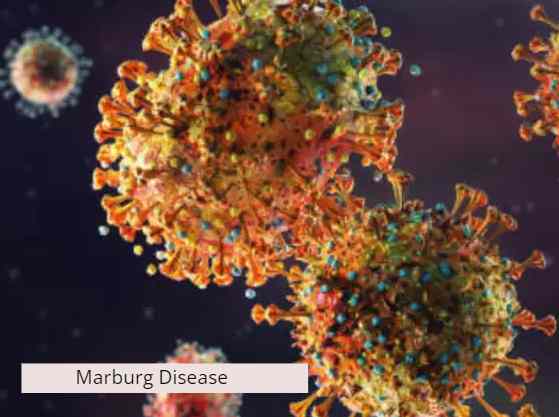News
What Exactly Is Marburg Disease ? Learn About the Symptoms
Published
1 year agoon

Marburg Disease Equatorial Guinea, Africa, has recorded 16 probable cases of the Marburg virus, which is related to the Ebola virus
The World Health Organization has verified the first-ever epidemic of Marburg illness, an Ebola-like virus, in Equatorial Guinea, Africa. There have been been nine confirmed deaths and 16 suspected instances of the illness. There are currently no licenced vaccinations or antiviral therapies for this virus. “Marburg Disease is really contagious. Because to the Equatorial Guinean authorities’ swift and immediate action in verifying the disease, emergency response can ramp up quickly, saving lives and halting the virus as soon as possible “Dr. Matshidiso Moeti, WHO Regional Director for Africa, stated.
Marburg disease: Symptoms, Transmission, and Prevention
What exactly is Marburg disease?
Both the Marburg and Ebola viruses are members of the Filoviridae family, however they are caused by distinct viruses. This virus causes hemorrhagic fever in humans, with an 88% mortality rate. It was discovered in 1967, following simultaneous epidemics in Marburg and Frankfurt, Germany.
Marburg disease symptoms
High fever, severe headaches, muscular aches, extreme malaise, and pains are all indications of Marburg. The infected person may have stomach discomfort, cramps, vomiting, and severe diarrhoea after two to three days. Extreme lethargy is associated with these symptoms.
Many individuals develop severe hemorrhagic symptoms between the fifth and seventh day after becoming infected. According to WHO, fatal cases generally involve some sort of haemorrhage. Death occurs 8 to 9 days after the beginning of symptoms due to severe blood loss and shock.
Marbury illness has an incubation period ranging from 2 to 21 days.
Transmission
Human-to-human transmission was used to spread the Marburg virus. Infected droplets sent from one person to another via any channel can infect the recipient. “Transmission via contaminated injection equipment or needle-stick injuries is associated with more severe illness, quicker worsening, and, potentially, a greater death rate,” according to WHO.
The virus, however, begins in bats, usually fruit bats, and then spreads to people.
The prevention of the Marbury virus
Steps should be done to assist restrict human-to-human transmission. It is not safe to come into touch with an infected individual. There should be no exposure to mines or caverns inhabited by fruit bats.
Vaccination
There is currently no vaccine or medicine available to treat this virus. Patients are treated to alleviate their symptoms.
Disclaimer: This content, including advice, is intended to give general information only. It is not a replacement for a qualified medical opinion. For further information, always visit a professional or your personal doctor. Credenttv is not responsible for this information.
How does Marburg start?
How is Marburg spread?
How many cases of Marburg virus 2022?
What is the main work of WHO *?
Who is most at risk for Marburg Disease ?
You may like
-


North Korea asserts that the test of a multiple-warhead missile was successful
-


The Student Wing of Congress storms the Exam Body NTA office and locks it from within
-


“During President Murmu’s address to Parliament, PM Modi was shown 73 times, and LoP Rahul Gandhi was shown six times”: Congress
-


NASA contracts Elon Musk’s SpaceX to deorbit the International Space Station in 2023.
-


A Caution For The CBI In The Delhi Court’s Arvind Kejriwal Custody Order
-


Bar Council of India requests that bar associations abstain from demonstrating in opposition to new criminal laws

